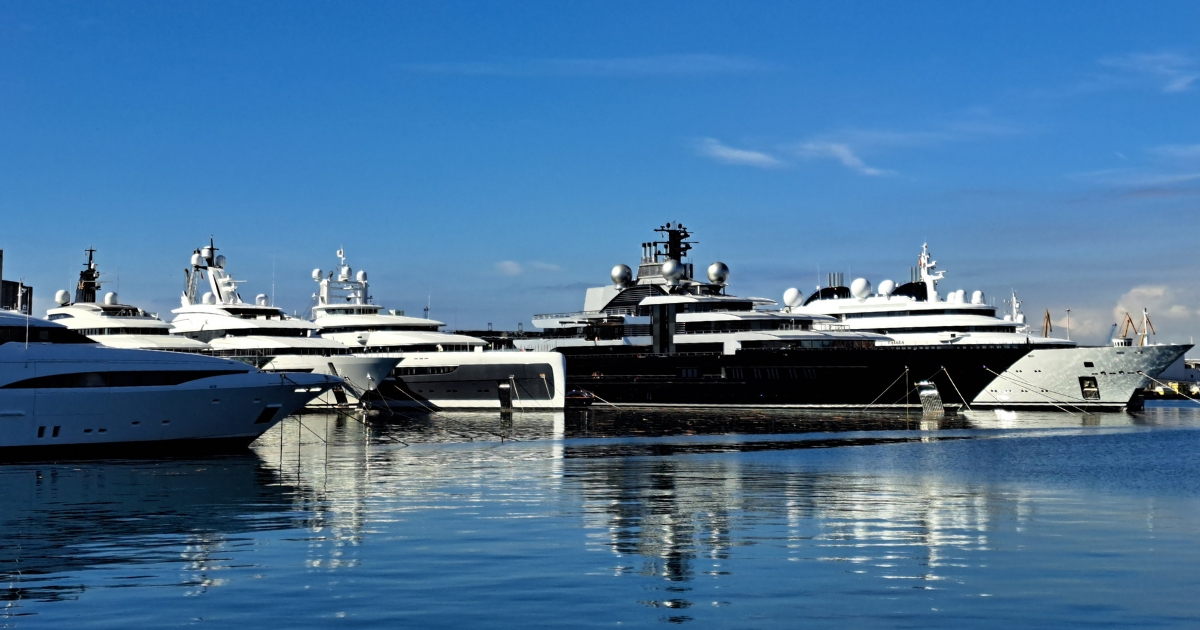What to Consider When Choosing Crew Radio Communications

In the intricate world of superyachts, communication isn't just a feature; it's a crucial part of the journey. For all ranks working on board, crew radio systems are therefore a vital tool and precision matters.
However, a recent survey conducted among AVIT & ETO’s on board found the biggest issues with their current UHF radio systems are interference and poor voice quality. So what are some of the common causes and solutions to enhance crew communications on board?
The UHF frequencies used on board yachts are defined within the International Telecommunication Union recommendation ITU-R M.1174-4. This is a set of frequencies agreed upon by countries that are members of the ITU for onboard UHF radio use. Notable non-member countries where these frequency recommendations do not apply include Cyprus, Saint Kitts and Nevis, Saint Lucia, Saudi Arabia, The Maldives, Malta, Antigua and Barbuda, Barbados, The Bahamas, and The Marshall Islands.
Symptoms and causes of radio interference
There are many symptoms of interference, including loss of radio signal in previously good signal areas, reduced radio range, hearing other vessels or radio users (mainly analogue radios), dropped calls and unclear voice transmissions from other crew.
A common cause is co-channel interference (CCI), which is where other users or vessels are using the same or similar frequencies, creating a battle for the finite resources within the spectrum. Another possible cause is passive intermodulation (PIM), which occurs when two or more signals are present in a non-linear device such as diodes or high-power AC devices. This results in a lowering of signal-to-noise ratio (SNR), which creates errors with the digital signal.
How to reduce radio interference?
Here are some practical solutions to consider:
UHF mast antenna switch
This allows the vessel to isolate the highest and usually the best-receiving antenna from external signals. As UHF is line of sight, having an antenna high up on the mast is excellent for tender operations but also for receiving unwanted signals. By isolating this antenna you can mitigate unwanted signals being fed into the repeater.
Ensure you have a dominant internal signal
The key to a good UHF onboard system is a strong signal in all areas, usually provided by a distributed antenna system (DAS). Having multiple antennas around the vessel is key, reducing the effects of PIM and CCI. A real-world example would be someone whispering in a friend’s ear at a rock concert (well planned DAS) compared to shouting aloud (poor DAS or single antenna).
Explore alternative frequencies
Many leading UHF manufacturers can store alternative frequencies within the radio programming. For example, the Motorola Radio Manager suite allows quick and easy changes to be made over RF or WiFi. Changing to alternative frequencies should be a simple push of a button.
Ensure regular maintenance
A defective component could also be the cause of your onboard interference, so having your radio equipment maintained by professionals ensures radios and base stations are always working optimally.

How to improve voice quality with crew radio systems?
The quality of voice communication largely depends on the radio technology being used. A common comparison is made between VHF radios, which are typically used on the bridge, and UHF systems used by the crew. VHF radios use analogue technology, which accurately reflects the user's voice by overlaying it directly onto the radio carrier wave. This is why you can easily recognise someone's voice and pitch changes.
On the other hand, digital radios work differently. They convert the user's voice into 0s and 1s using a vocoder before transmitting it. The receiving radio then reconstructs the voice data stream to produce the sound heard by the listener. The key difference between digital radio systems is the modulation type, bandwidth and vocoders used, which is why there's a clear difference in voice quality between DMR and TETRA radios.
Practical considerations to enhance voice quality include:
-
Programming radios for the environment
-
Ensuring comprehensive UHF coverage.
-
Providing crew training on optimal radio usage.
-
Investing in reputable UHF radios.
New builds and refits
In the context of new builds and refits, careful consideration of communication systems is paramount. Collaborating with experts who understand the nuances of maritime communication technology ensures that chosen systems align seamlessly with vessel-specific requirements. This approach is not just a technical decision but a strategic one, influencing the efficiency of teamwork and response in critical situations at sea.
Whether in the planning stages of new builds or the enhancement phase of refits, the integration of advanced communication systems should be guided by professionals who can assess existing infrastructures, recommend tailored solutions, and ensure that the selected technology is both compliant with international standards and optimised for operational needs.
By prioritising these considerations, maritime professionals can create a communications environment that fosters safety, efficiency, and reliability on board, contributing to the overall success of the vessel’s operation.
For advice and assistance with your crew radio communications contact the experts at Olas Communications.


Post your comment
You cannot post comments until you have logged in.
Login to post a commentComments
No one has commented on this page yet.
RSS feed for comments on this page | RSS feed for all comments